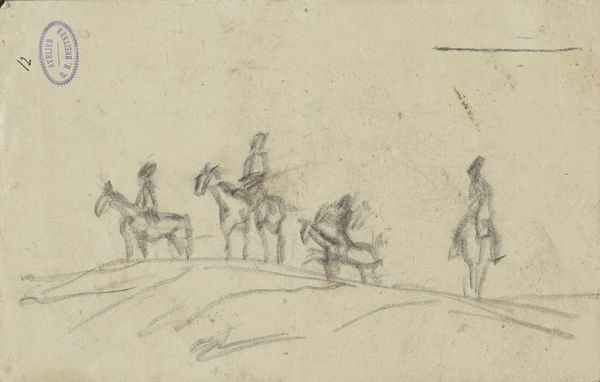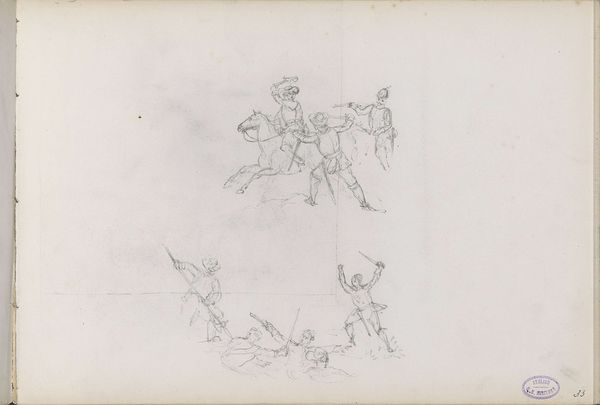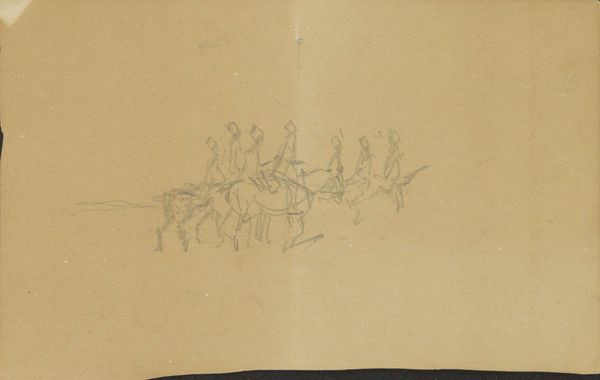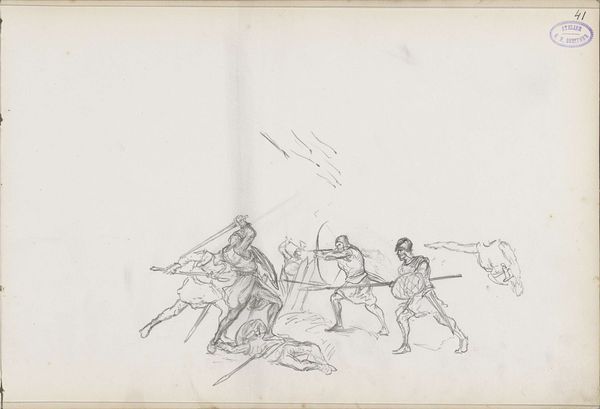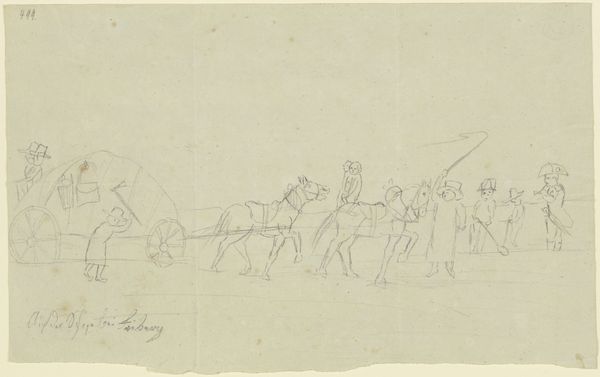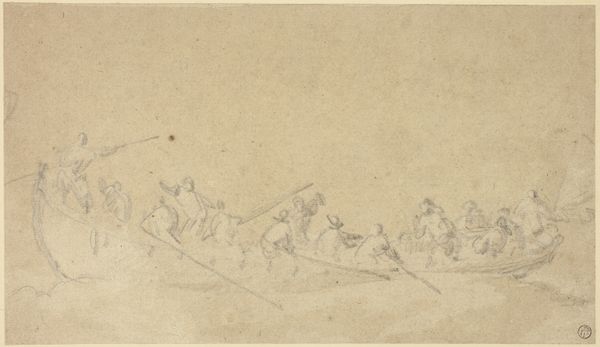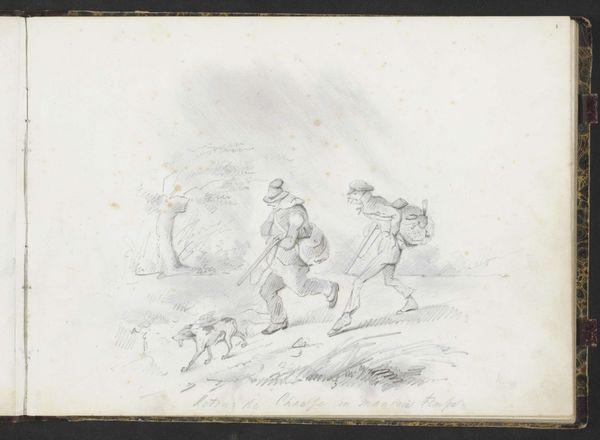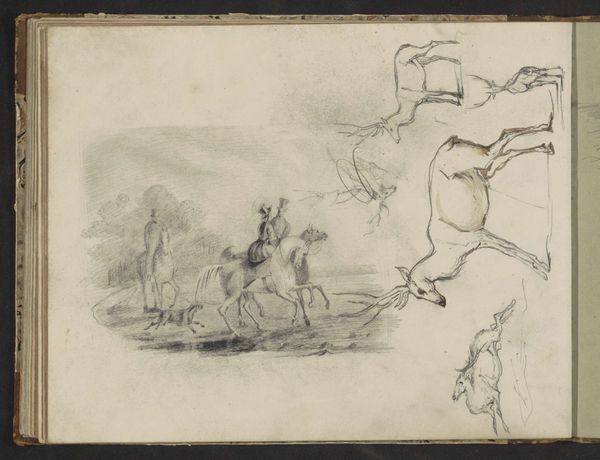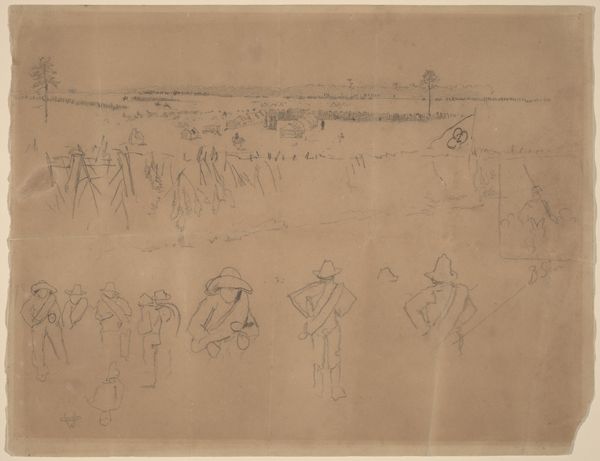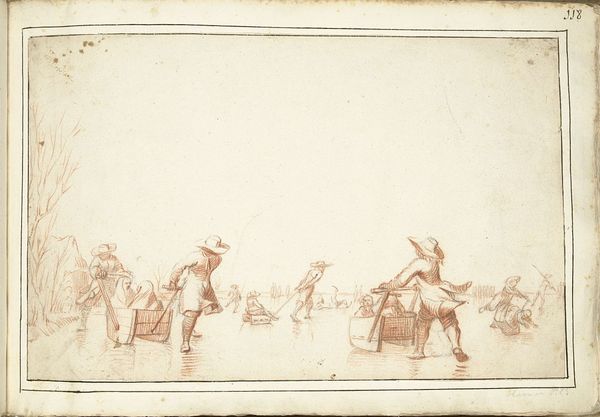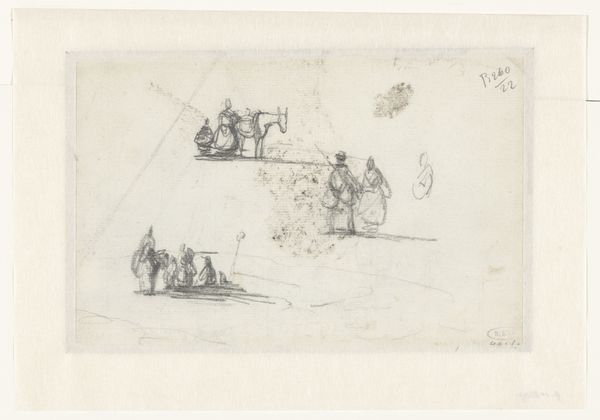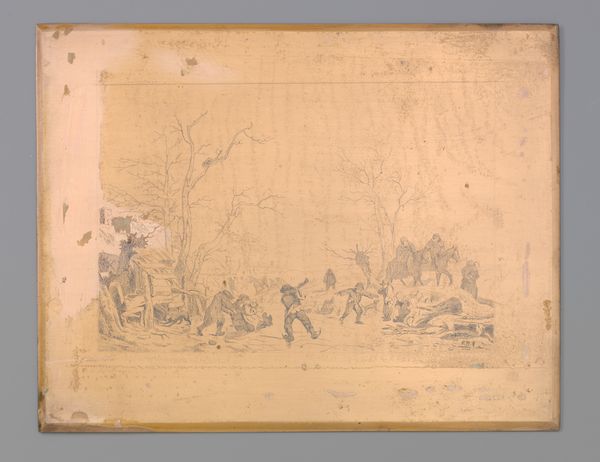
Dimensions: height 136 mm, width 213 mm
Copyright: Rijks Museum: Open Domain
Curator: Breitner’s “Ruiters in de duinen,” or “Riders in the Dunes,” created around 1880, presents an intriguing scene rendered with pencil and watercolor on toned paper, currently residing here at the Rijksmuseum. Editor: There's a palpable sense of motion despite the sketchy, almost unfinished quality. It's interesting how the figures emerge from this minimal depiction—there's something quite visceral in its brevity. Curator: Considering Breitner’s deep engagement with the socio-political atmosphere of his time, one could read the image of riders as a metaphor for the emerging bourgeoisie, particularly their evolving relationship with nature and leisure, claiming a space—the dunes—as their own playground. Editor: I find it interesting how such a simple landscape reflects broader concerns. It makes me consider how artistic representations during the late 19th century served to construct or reinforce ideas about national identity. Was this depiction a kind of subtle commentary on Dutch society’s shifting identity, using the natural environment to signal those shifts? Curator: It could certainly be interpreted that way, thinking about contemporaneous writings from socialist and feminist writers like Multatuli and Aletta Jacobs, and their own critique of societal norms and representation of figures traversing land...it all merges. But let's remember the artist’s own urban experience within the city of Amsterdam. It feels almost a retreat. Editor: You're right, perhaps the “Ruiters in de duinen” is indeed also personal, referencing Breitner's relationship to the emerging commercialized culture within Amsterdam at the time, where gender, race, and class intersect in interesting ways, reflected in urban daily life. Curator: It becomes very potent if interpreted like that. Thanks for that contextual reflection. Editor: Thanks to you! The way historical undercurrents seep into simple sketches, it reminds me we should remain constantly attentive to how those figures still "ride through the dunes" in our contemporary society.
Comments
No comments
Be the first to comment and join the conversation on the ultimate creative platform.
